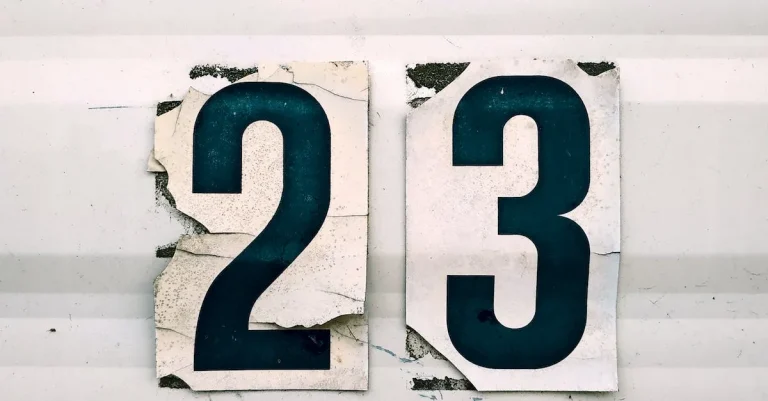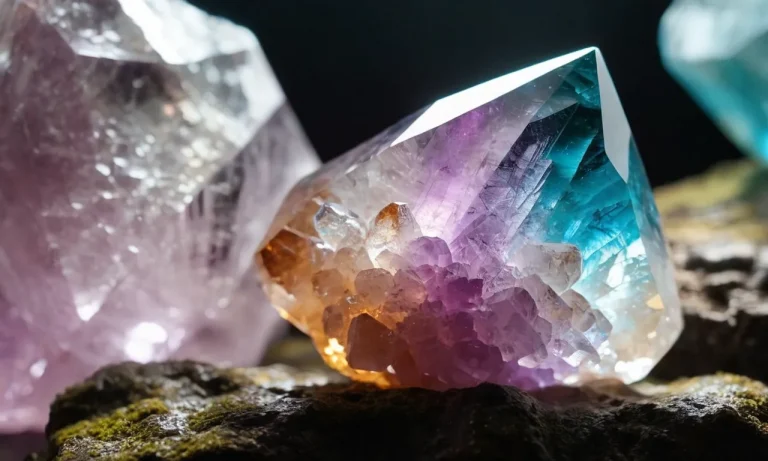Crowns have been worn by rulers and royalty for centuries, symbolizing power, status, and spiritual authority. But beyond their decorative and status symbol functions, crowns also carry deep spiritual meaning that originates from religious texts and teachings.
If you’re short on time, here’s a quick answer to what crowns spiritually mean: Crowns represent spiritual authority, power and rulership that ultimately comes from God or divine sources according to Judeo-Christian and other spiritual traditions.
The crown chakra symbolizes one’s spiritual connection and destiny.
In this comprehensive guide, we will explore the varied spiritual meanings and symbolism of crowns from different faiths and perspectives including Christianity, Judaism, Hinduism and more. We’ll cover topics ranging from Bible verses about crowns, their meanings in dreams, the crown chakra, and more.
Crowns in the Bible and Christianity
Crowns Represent Rewards in Heaven
In the Bible, crowns often symbolize rewards believers can earn for faithful service. Several New Testament passages refer to the “crown of life” (James 1:12), “crown of righteousness” (2 Timothy 4:8), and “crown of glory” (1 Peter 5:4) that will be awarded in heaven.
These crowns represent the honor and blessings bestowed upon those who persevere in Christian faith.
The crown of life, for example, is promised to those who withstand trials and temptations. The crown of righteousness is given to those who love Christ’s appearing. And the crown of glory is reserved for those tasked with spiritual care of believers.
Just as crowns denote royalty on earth, these crowns signify the spiritual blessings, authority, and rewards believers enjoy in God’s kingdom.
Crowns Symbolize Spiritual Authority and Responsibility
The Bible also shows how crowns indicate the spiritual authority and responsibility appointed to leaders. For instance, Proverbs 16:31 states, “A gray head is a crown of glory; it is gained by living a righteous life.” Here, the crown metaphorically demonstrates how advanced age and maturity accords wisdom and leadership status.
Similarly, leaders such as kings and priests in the Old Testament wore ceremonial crowns as a sign of the spiritual authority and responsibility conferred upon them. Their crowns demonstrated that they were set apart to guide and care for God’s people.
Jesus’ Crown of Thorns
In the New Testament, Jesus wore a Crown of Thorns placed mockingly on his head by Roman soldiers (Matthew 27:29). This uncommon and painful crown represented Jesus taking the sin and suffering of the world upon himself.
As Hebrews 2:9 states, “We see Jesus crowned with glory and honor because he suffered death”.
While Jesus bore this crown in humiliation and sacrifice, Christians believe his resurrection and ascension back to heaven resulted in him being crowned with the highest glory and honor. As Philippians 2:8-11 describes, Jesus humbled himself but God highly exalted him with the name above all names that one day all would kneel before.
Crown Symbolism in Judaism
The High Priest’s Golden Crown
In ancient Judaic traditions, the golden crown worn by the High Priest held deep symbolic meaning. This ornate headdress represented the glory, honor, and responsibility bestowed on the High Priest as he entered the Holy of Holies once a year on Yom Kippur to make atonement for the people’s sins.
The crown featured golden plate across the forehead engraved with the words “Holy to the Lord” – a reminder of the High Priest’s duty to follow God’s laws with utmost holiness (Exodus 28:36-38). The gold and precious stones covering the crown symbolized the spiritual wealth, divine wisdom, and nobility of character expected of the religious leader of the Jewish people.
According to Talmudic legends, when the righteous High Priest would enter the Holy of Holies, the golden plate on his crown would miraculously light up the room. This illuminated the spiritual power attributed to this position.
It also connects to the Kabbalistic concept of “crowning God” through righteous deeds.
Crowns and Sabbath Day Blessings
Beyond the High Priest’s golden crown, crowns hold other symbolic meaning in Jewish customs. Parents traditionally bless their children on the Sabbath eve when returning home from the synagogue. As they place their hands on each child’s head, the blessing envisions “the crown of the good name, the crown of Torah, and the crown of priesthood.”
These three crowns speak to the Jewish values of having an upright character, dedication to religious learning, and living as a “kingdom of priests and holy nation” (Exodus 19:6). By envisioning golden crowns, the Sabbath blessing connects each child’s potential to the ancient priestly glory represented by the High Priest’s crown.
This shows how crown symbolism in Judaism spans from the highest religious leader to the youngest member of the community. As written in the ethics tractate Avot 4:13, “There are three crowns: the crown of Torah, the crown of priesthood, and the crown of sovereignty.” All Jewish people strive to claim these crowns through walking justly with God.
Hindu Crown Chakras and Destiny
Sahasrara – The Crown Chakra
In Hindu spirituality, the crown chakra, known as Sahasrara, is considered the doorway to ultimate consciousness and spiritual enlightenment. Located at the very top of the head, it represents the state of pure awareness, wisdom and bliss.Sahasrara is often symbolized by the image of 1,000 multi-colored petals like a glowing crown, representing the limitless potential of human consciousness.
Balancing and Opening the Crown Chakra
A balanced Sahasrara brings feelings of inner peace, acceptance, tolerance and universal understanding. However, when it’s overactive or blocked, one may feel detached, have racing thoughts or suffer from poor comprehension.
To balance this chakra, activities like meditation, visualization and supporting good causes can be helpful. Specific practices to open Sahasrara include:
- Kundalini awakening exercises like breathwork, chanting and yoga
- Consciousness-expanding techniques like sensory deprivation or float therapy
- Prayer, spiritual study and selfless service
When the Crown chakra fully opens, Hindus believe humans can achieve spiritual liberation or moksha – the soul’s release from the cycle of death and rebirth.
Reaching One’s Spiritual Destiny
The Sahasrara allows access to one’s higher self, inner divinity and life purpose. As it activates, a person grows into their destined role as a spiritual teacher, healer, creative visionary or leader who uplifts humanity.
Fully opening this chakra is said to initiate incredible powers like clairvoyance, cosmic unity and compassion. Saints who attained high states of enlightenment through Sahasrara were said to be crowned by golden halos, fiery auras or coronas of light, symbolic of their spiritual mastery.
Just as kings and queens wear crowns as symbolic of ruling power, the Hindu crown chakra represents one’s inner spiritual sovereignty. Sahasrara’s thousand gleaming petals await within all human beings, as an initiation into infinite living potential.
Dream Interpretations of Crowns
Power and Responsibility
Crowns in dreams often symbolize power, authority, and responsibility. According to dream analysts, if you dream of wearing a crown, it may indicate you are on the verge of taking on an important leadership role or facing increased obligations in your waking life.
Some common crown dream scenarios and their interpretations include:
- Being crowned in public – This suggests you are ready to take charge of a project or situation that involves coordinating with others.
- Feeling the weight of a heavy crown – This crown dream signals that great responsibility lies ahead and you question whether you can handle it.
- A crown falling off your head – This implies struggles or failures with leadership duties you have already taken on.
Ultimately, crown dreams remind us that all forms of power come with consequences. As Keen notes, crowns “represent the commitment and sacrifices necessary for authority.”
Achievement and Destiny
Beyond responsibility, crowns in dreams can indicate major milestones and alignment with ultimate purpose. For example, being crowned after climbing a tall mountain or finishing a race suggests you have achieved major goals or are making progress on an important life undertaking.
Other crown dreams with themes of achievement and destiny include:
- Someone crowning you as a form of honor or tribute
- Discovering a crown buried beneath ground or encased in ice
- A crown that is bright, shiny, and celestial in nature
These types of dreams often coincide with big transitions related to self-actualization or epiphanies about your higher calling. In short, crown dreams marked by positivity, celebration, and divinity are Signals you are embracing your full potential.
| Type of Crown Dream | Interpretation |
|---|---|
| Being crowned after achievement | Making good progress on purposeful goals |
| Receiving a crown as tribute | Affirmation and honor of talents |
| Discovering buried crown | Uncovering latent gifts and destiny |
Royalty and Spiritual Identity
When it comes to assessing crown dreams, context is everything. For example, simply dreaming about royalty can mean you feel self-important or sense a need for pampering. But dreams of yourself wearing royal crowns often have deeper connotations related to spiritual growth and awakening.
What might a crown dream reveal about your soul’s journey? Common interpretations include:
- Realizing you are “royalty in God’s eyes”
- Embodying more wisdom, dignity, and stillness
- Stepping into spiritual authority by teaching or healing others
Some theorists apply crown color symbolism in royal crown dreams as well. For instance, gold crowns represent the Midas touch and abundance, whereas silver crowns signal intuition and vision. But the true jackpot is coping with discomfort or negative emotions while wearing a radiant crown—a sign of enlightenment.
Conclusion
Throughout various spiritual traditions, crowns have held profound symbolic meaning representing the highest spiritual authority, one’s destiny and responsibility to lead others towards truth and justice with wisdom and compassion.
While few may ever physically wear ornamental crowns, we all have an inner crown chakra representing our spiritual connection. Work on strengthening that connection by living up to the qualities that crowns have always represented.






